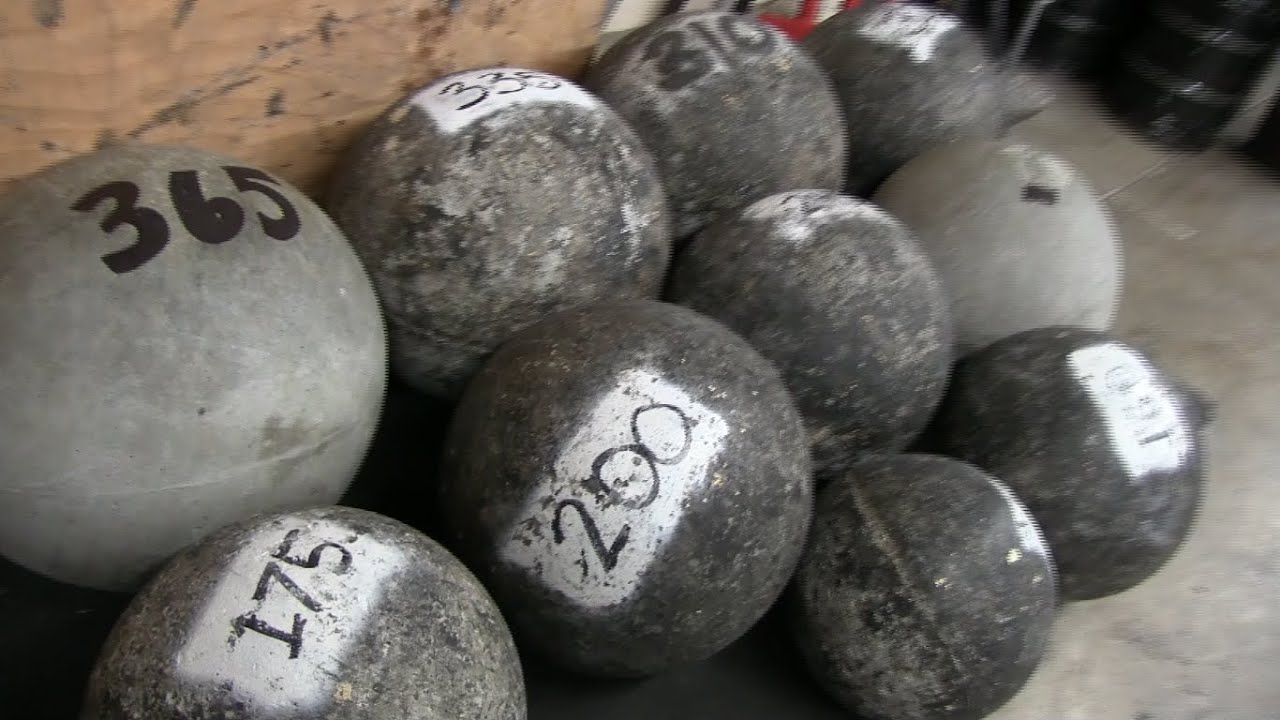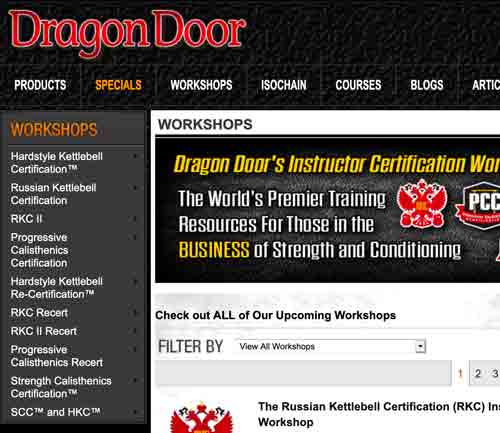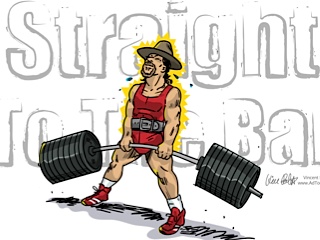
You may have heard of the “Crazy Bell” bench press exercise made popular by Louie Simmons of Westside-Barbell with the use of a bamboo bar. Instead of having the weight slide onto the barbell like a typical bench press exercise, the weight is suspended by bands; this suspended weight bench press method is excellent for training stability in the upper body and shoulders. The weight bounces creating pull in different parts of the motion making for a very challenging exercise. The bamboo bar has a higher modulus of elasticity than the standard Olympic bar, meaning it has a greater flex to it, which causes the bar to be more challenging to stabilize through the range of motion required for the exercise.
Now that you understand what the “Crazy Bell” bench press is and how it works, I would like to introduce you to a range of exercises for the lower body that this same method can be applied to. There is no reason that this excellent stability method cannot be transferred to the lower body as long as it is done properly with safe technique. As you can see pictured below, this method does not require expensive kettle bells or fancy bamboo bars; it can be performed with standard plates and barbells.
Intermediate Lifts
I have intermediate athletes perform both the Zercher Squat and Zercher Good Morning from pins or a “racked position” to give them stability at the bottom of the lift. It may be difficult for an intermediate athlete to perform these lifts safely with the band suspended weight through the full range of motion without putting their knees and/or back at risk of injury, as an intermediate athlete may not be able to maintain proper technique though the full range of motion.
Zercher Squat from pins

This exercise is excellent for building core strength in an athlete. I found that performing this exercise forced me to engage my core more than I normally would have when I rigged up the weight using red bands and 35-pound plates, which provided minimal bounce. I used this exercise on my dynamic lower body day for three sets of ten. I also feel it would make a good supplemental exercise during a max effort lower body workout, to focus on the core and to give the legs a little extra work after performing a max effort lift. I experienced the effects of the exercise immediately after I racked the bar and felt swelling throughout my entire core. The next day I felt minimal soreness in my legs, however, I definitely felt the benefit in my core. This is an excellent supplemental exercise for core training on a leg day.
Zercher Good Morning from Pins

I had similar results to the Zercher Squat from pins with this exercise. The weight I used did not have an overwhelming amount of bounce to it – 35-pound plates with red bands. However, it did create enough instability to engage my core more than without the band suspended weight. I performed the exercise for three sets of ten as a supplemental exercise for my core and posterior chain on my dynamic leg day.
Advanced lifts
For a more advanced and stable athlete I have found that the Full Squat from both the front and back position with band suspended weights will make for a fun and challenging exercise. With the Front and Back Squat, I observed it was easier to load up the weight on the bar before adding the band suspended weight. These lifts were not only challenging to stabilize but I was able to focus more on leg strength, whereas the intermediate lifts from pins were more core based.
Full Back Squat

When performing this exercise, I found one of the most challenging aspects to be getting into position to perform the squat. While taking a step back and setting up my feet the weight wanted to move around quite a bit, which forced me to keep a tight core the entire time — a Monolift would definitely eliminate this issue if desired. In addition, I found that the difficulty of the exercise varied depending on the speed of the squat and the amount of weight suspended by the bands. The faster the squat the more the weight bounced creating a unique squatting experience. The more the weight bounces the more difficult the squat becomes due to the drop of the weight creating a strong pull on the bar in slightly unpredictable ways — the heavier the weight the stronger the pull on the bar. This exercise forces your entire body to stay tight in order to stay stable throughout the movement.
Full Front Squat

In essence, this is similar to the Back Squat in terms of what to expect from the exercise. The major difference I found in the lift was that it was more difficult to hold onto the bar when the weight started to bounce. Nevertheless, this is an excellent supplemental exercise for advanced athletes on a leg day and contributes to superior total body stability.
Bulgarian Split Squat

This exercise can be difficult for people without the band suspended weight so I strongly recommend staying away from this lift unless you demonstrate superior balance and stability. Now for those that can handle it here are my thoughts; just like any unilateral exercise it is an exceptional supplemental exercise to follow a max effort lift or even to use on a dynamic effort leg day. The band suspended weights add an edge to the exercise to make it a little more challenging for the more advanced athlete with excellent balance and core strength. It is also an excellent way to keep your workouts from growing stale and boring by providing a fun challenge.
Training in unstable conditions is necessary for all athletes! It is not often in any sport that an athlete is stable on both feet. As such, it is extremely important to develop excellent balance and stability through the full range of motion of several different postures. This is why those who are knowledgeable about training athletes strongly believe in unilateral exercises. Although the exercises I have described are not all unilateral movements, the principle of training for stability in an unstable environment stand strong. Not only will stability training improve an athlete’s presence on the playing field but it will also help improve an athlete’s abdominal, oblique and erector spinae strength, all of which will directly correlate to improved posture and strength in essentially all other lifts.
Imagine making the core concrete opposed to foam. When squatting there is a lot of weight and stress placed on the body, shooting from the bar straight down your spine through your legs to the ground. If your core is “foam” – weak – it will not be able to maintain proper posture through the range of motion of the exercise, which will almost certainly lead to injury and a weaker lift. However, if your core is “concrete” – strong — it is able to handle that weight with much less stress, allowing you to move through the full range of motion strong and stable.











0 Comments